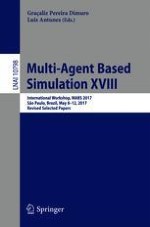This book constitutes the thoroughly refereed post-conference proceedings of the 18th International Workshop on Multi-Agent-Based Simulation, MABS 2017, held in Sao Paulo, Brazil, in May 2017. The workshop was held in conjunction with the 16th International Conference on Autonomous Agents and Multi-Agent Systems, AAMAS 2017.
The 15 revised full papers included in this volume were carefully selected from 23 submissions. The topic of the papers is about applying agent-based simulation techniques to real-world problems focusing on the confluence of socio-technical-natural sciences and multi-agent systems with a strong application/empirical vein.
